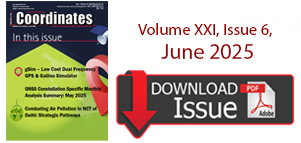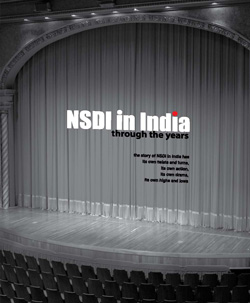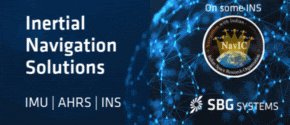Articles in the Navigation Category
In this paper, we discuss a research effort for an Automated Nautical-chart Generalization (ANG) model in the Esri environment
Tamer Nada
Center for Coastal and Ocean Mapping/ UNH-NOAA Joint Hydrographic Center, University of New Hampshire, Durham, USA
Christos Kastrisios
Center for Coastal and Ocean Mapping/ UNH-NOAA Joint Hydrographic Center, University of New Hampshire, Durham, USA
Brian Calder
Center for Coastal and …

The global industry is preparing to change its navigational heading reference from Magnetic North to True North. This article examines the issues involved, and provides an update on the progress of research into options for managing the transition process.
David Learmount
Private pilot Former pilot and Qualified Flying Instructor in the …

In this paper we proposed a model and a Proof of Concept imple-mentation on how to integrate blockchain technologies to land administration system that relies on ISO 19152:2012 Land Administration Domain Model
Attoumane Tahar
Université Cheikh Anta Diop de Dakar Dakar, Dakar, Sénégal
Gervais Mendy
Université Cheikh Anta Diop de Dakar Dakar, Dakar, Sénégal
Samuel Ouya
Université Cheikh Anta Diop de …

In the emerging analysis we identified design considerations for future walking-focused applications, emphasizing the subjective and personal nature of walking routes
James Williams
Nottingham Geospatial Institute, University of Nottingham
James Pinchin
Nottingham Geospatial Institute, University of Nottingham
Adrian Hazzard
Mixed Reality Laboratory, University of Nottingham
Gary Priestnall
School of Geography, University of Nottingham
Abstract
In this paper …

Migratory animals have innate programs to guide them to their still unknown goal. Highly mobile animals with large ranges develop a so-called navigational ‘map’, a mental representation of the spatial distribution of navigational factors within their home region and their migration route. Readers may recall that the first part was published in November issue. We …

Migratory animals have innate programs to guide them to their still unknown goal. Highly mobile animals with large ranges develop a so-called navigational ‘map’, a mental representation of the spatial distribution of navigational factors within their home region and their migration route. We present here the first part of the paper. The concluding part will …

The paper delineates an important potential role for the Mechanism in a navigational process practiced by mariners in the
18th and 19th centuries
James E. (Jim) Wyse
Chief Scientific and Technology Officer, Maridia Research Associates Professor (Ret’d), Memorial University, Canada
Abstract
Since its recovery in 1901 from the seabed near the small Greek island of Antikythera northwest of Crete, a …
The ITU Membership considered and approved a package of three revised ITU-R Recommendations on radionavigation-satellite service (RNSS) systems as listed below.
Recommendation ITU-R M.1787-4 – Description of systems and networks in the radionavigation-satellite service (spaceto- Earth and space-to-space) and technical characteristics of transmitting space stations operating in the bands 1 164-1 215 MHz, 1 215-1 300 …

We have implemented the circuit design comprising of phase detector, limiter, loop filter, NCO and clock divider in hardware using FPGA. The disciplined 10MHz is measured to have a long term (10,000 sec) stability of 1.7 x 10-10. In case of non-availability of NavIC 1PPS, the circuit is designed to work with an internal 1PPS …

This paper reviews the background to the grounding of Clipper Adventure, and the geomatics issues related to the grounding
Bruce Calderbank
Retired Fellow of the Royal Institution of Chartered Surveyors (FRICS), a Canada Lands Surveyor (CLS), a Canadian Certified Hydrographer (CH) Level 1, a Certified Professional Hydrographic Surveyor Level 1 (CPHS 1), and an Albertan Professional Engineer …










 (5.00 out of 5)
(5.00 out of 5)